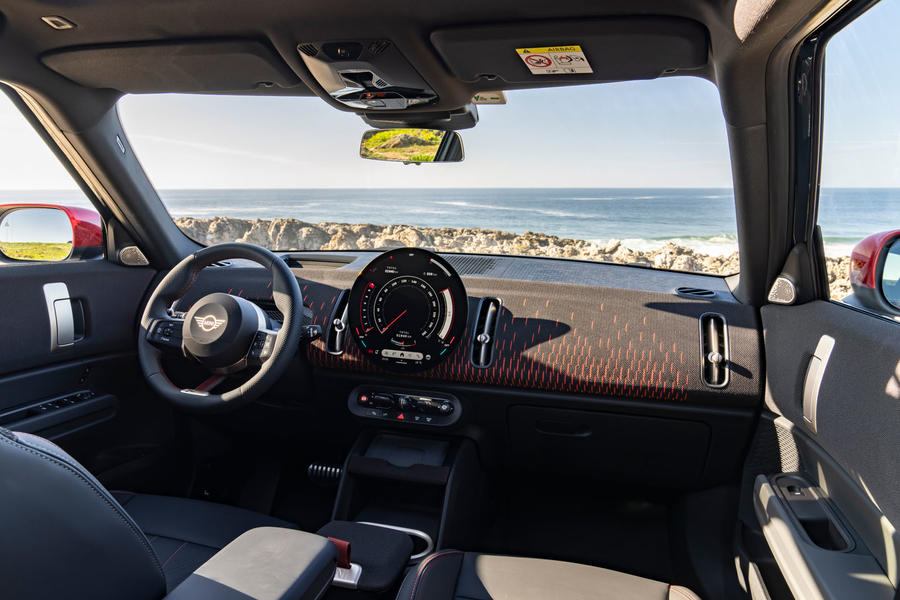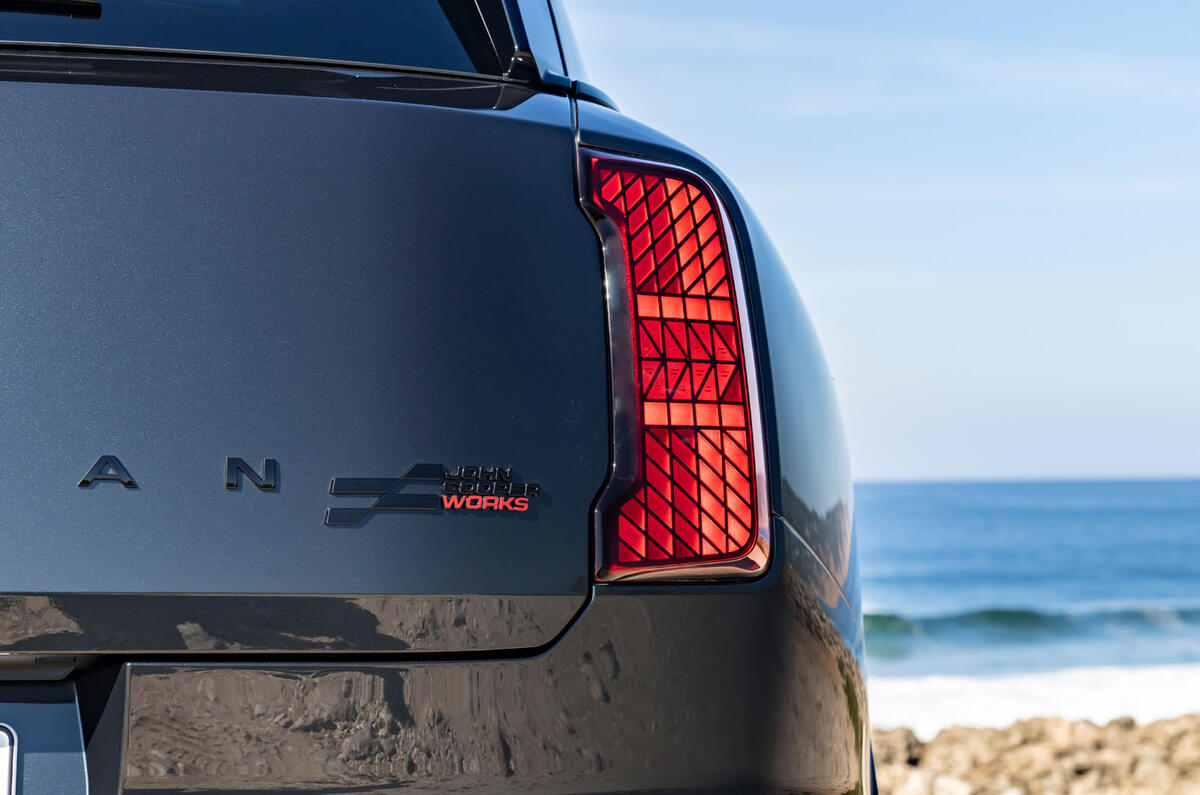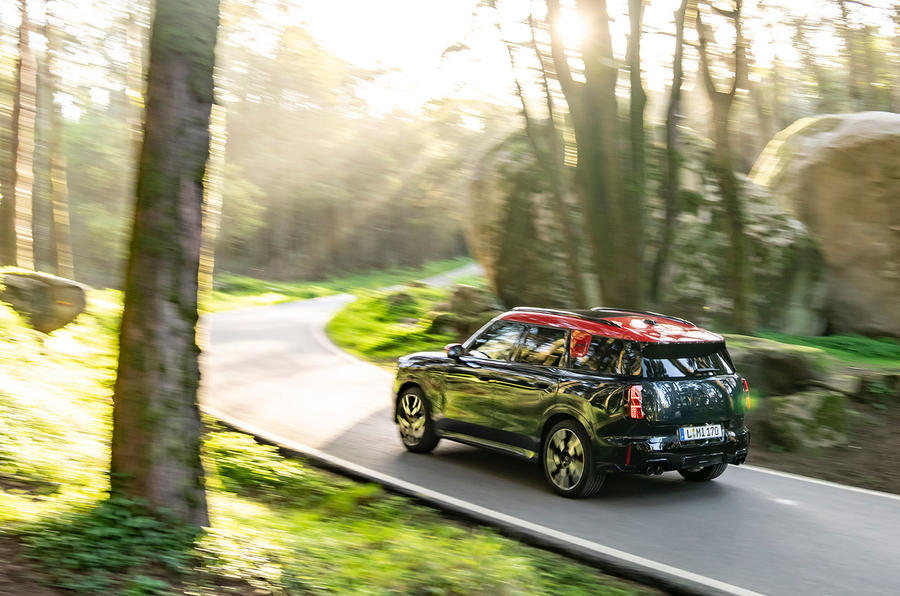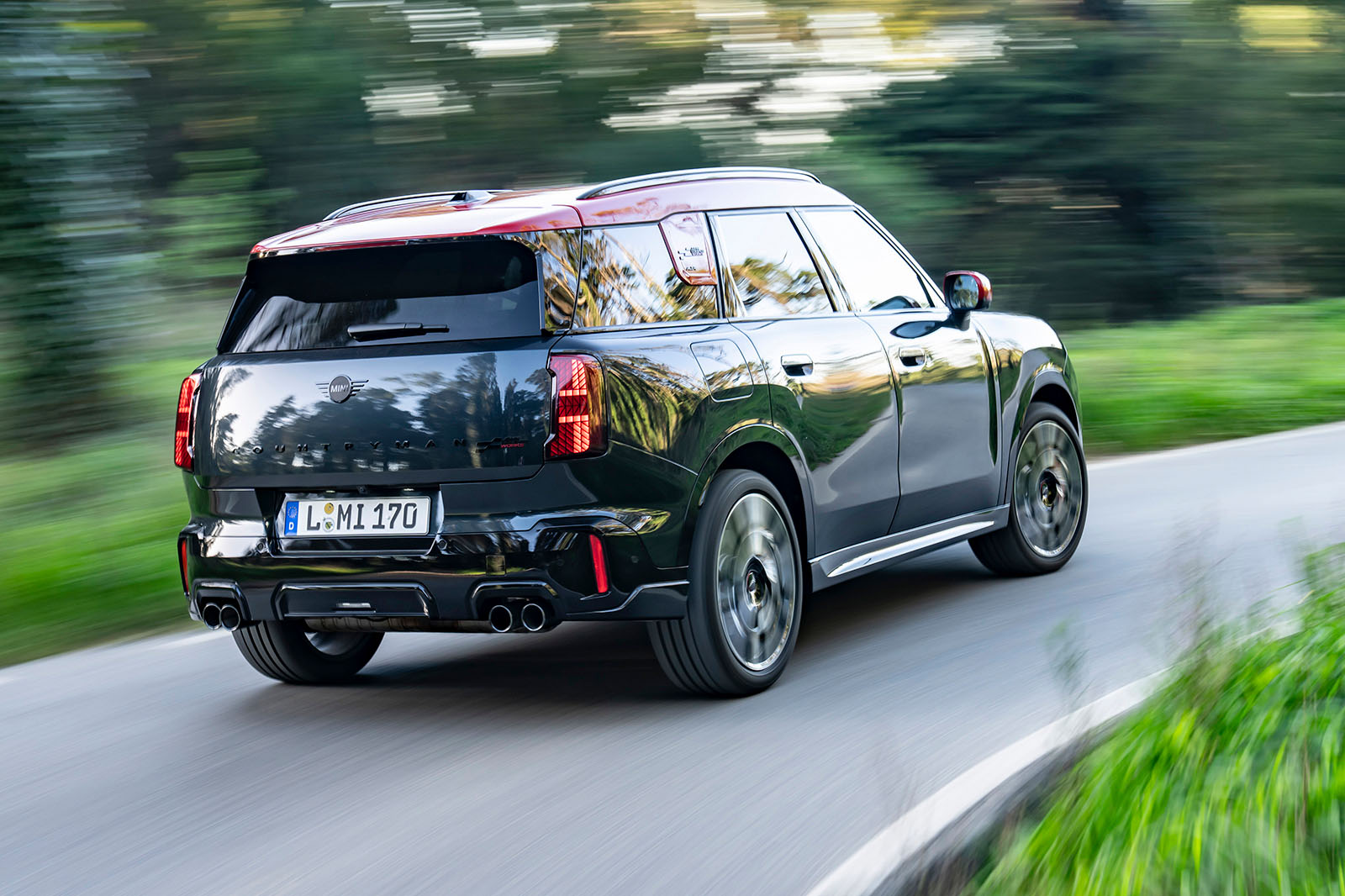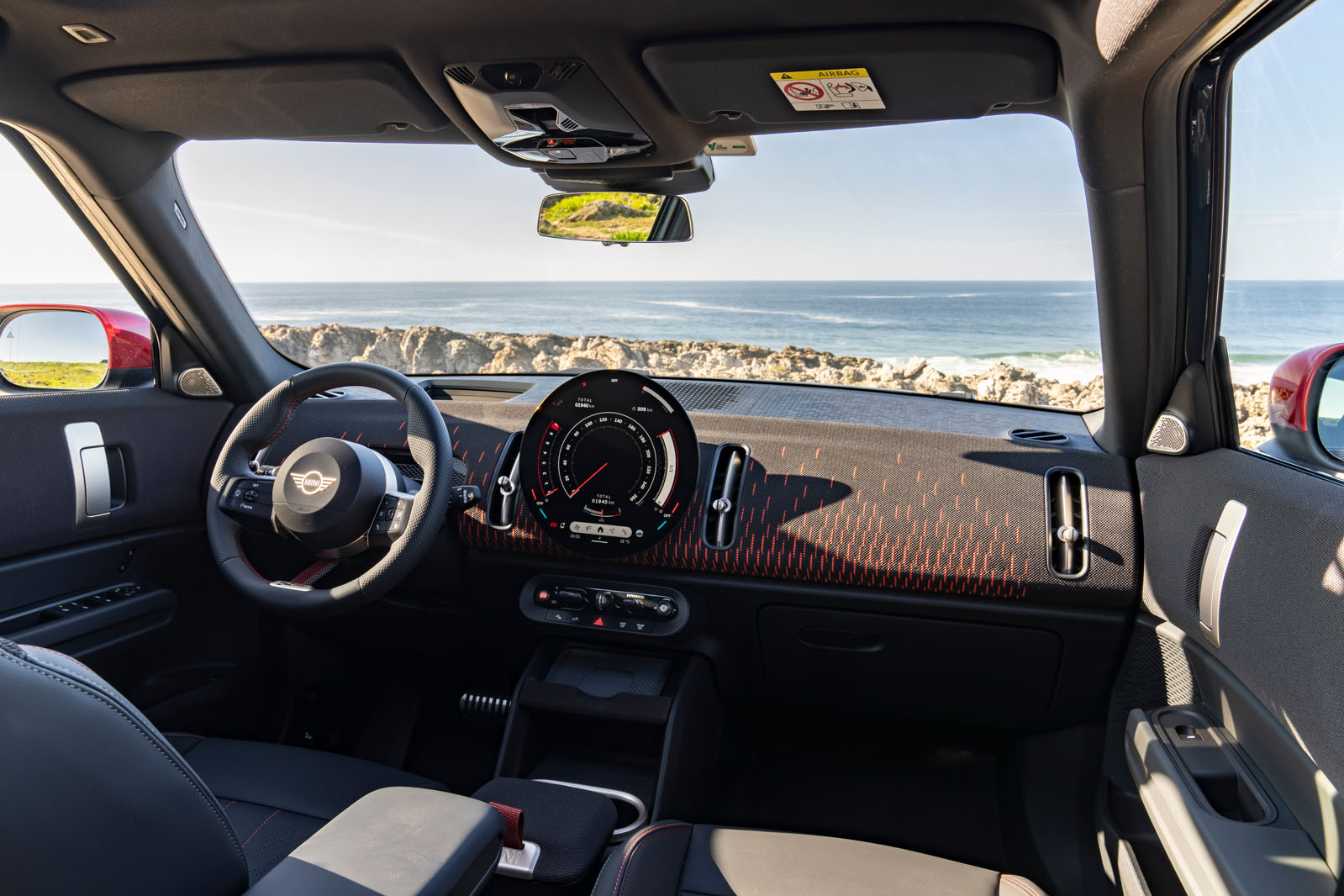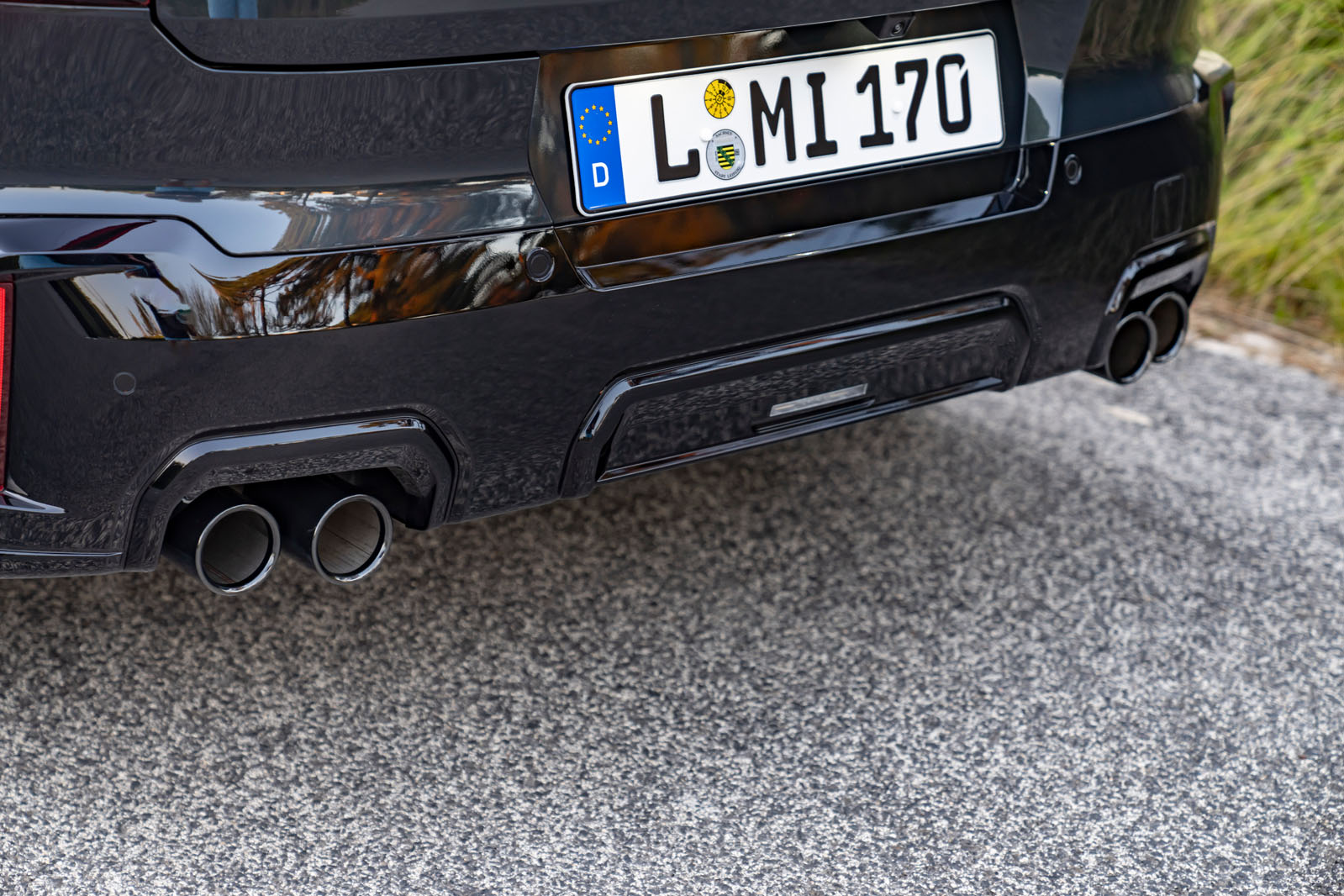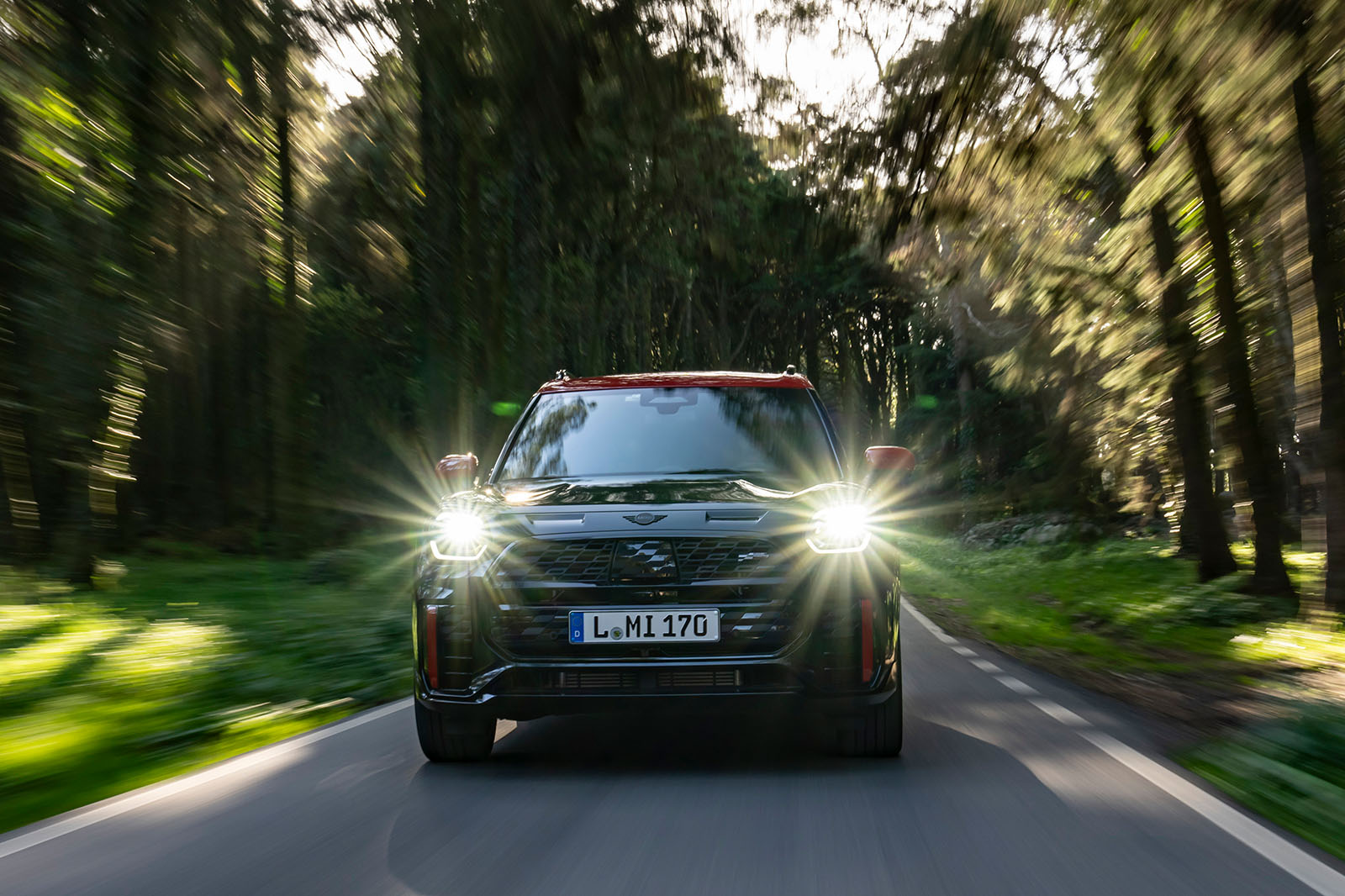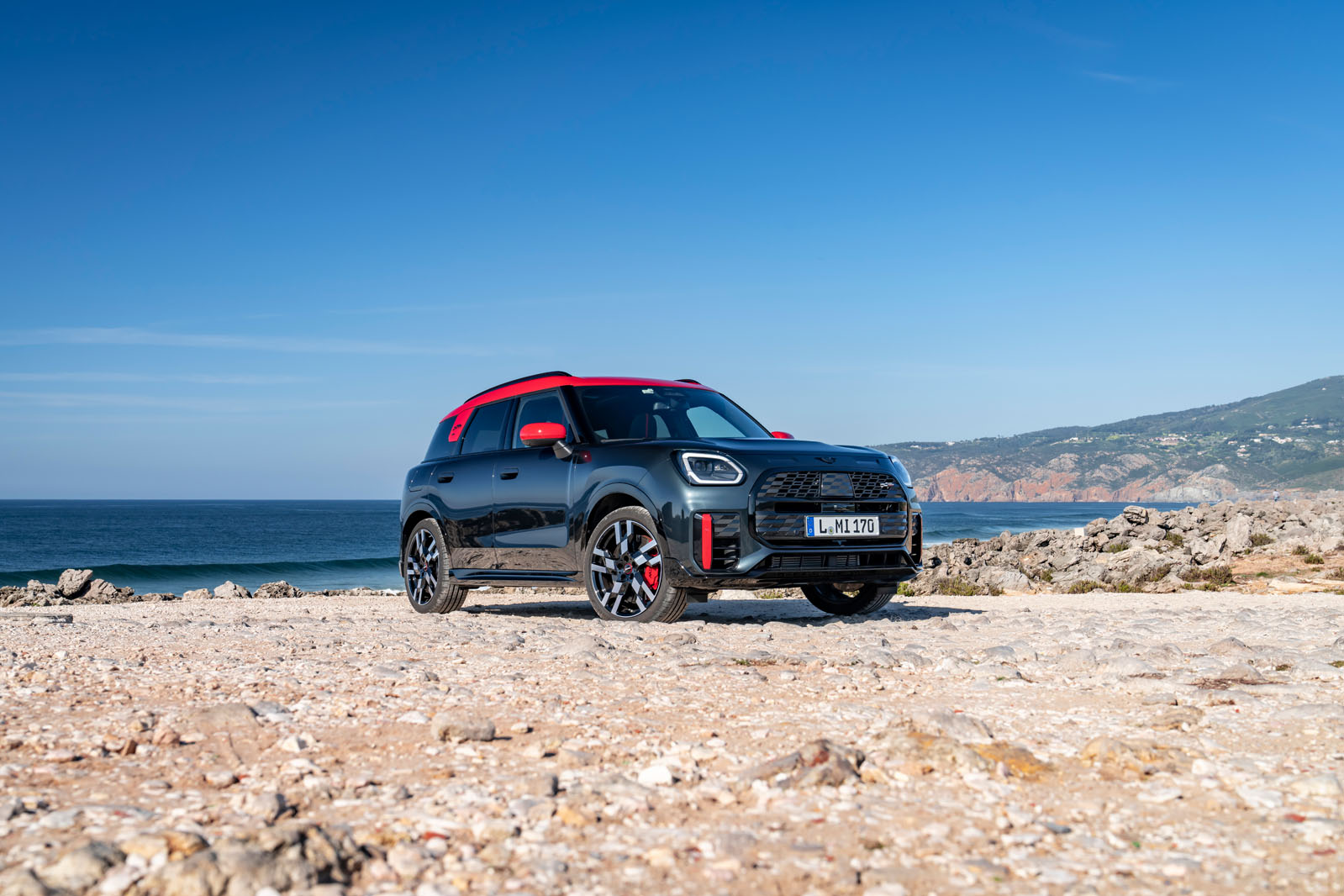The interior is a clever and well-realised mix of modern minimalism and just enough retro touches to keep the Mini faithful happy. It’s bright and open and feels premium while still quirky and fun.
As you would expect, there’s plenty of space, too. It’s roomy up front and adults should have no problem in the rear, particularly as the rear seats can be shifted back and forth by as much as 13cm.
The boot is a decent shape and has a capacity of 460 litres, which is more space than in the Nissan Qashqai. Fold the rear seats down and the storage increases to a definitely-not-mini 1450 litres. There's plentiful storage cubbies in the main cabin too.
You sit in that classic raised SUV position, so visibility is good and it’s easy to get comfortable. The dashboard uses a two-tone textile that’s made with recycled polyester, with different designs for the various specs and trims. In the John Cooper Works, it’s sporty JCW black and red (a colour scheme that also extends to the sports seats).
It’s certainly minimalist, being dominated by a 9.4in infotainment screen, proudly trumpeted by Mini as the first round OLED touchscreen in a production car – although, well, you name another car with any kind of round screen. Go on, I’ll wait.
It’s a nice change from a Tesla-aping giant slab, though, and of course it echoes the large central speedo of the original Mini. In fact, on first experience, you’re so taken by it that it takes you a moment to notice that the instrument cluster and most of the other dash-sited controls have been removed.
As in a Tesla or the Volvo EX30, the speedo is displayed at the top of the touchscreen. It actually works quite well, with the round shape making it easy to find at a glance. And if that’s not to your taste, your speed is also shown on a sharp head-up display (standard on the JCW but optional on some lower trims).
Beneath the screen is a small number of physical controls that also echo the original Mini, with a twist ignition, an audio volume dial and toggles for the gear selector and the Experience modes (which we will come to in a moment). Below those is a wireless smartphone charger, two cupholders and a small storage cubby.
The infotainment is based on the latest BMW system but customised to fit the round screen, and it works well, with the native apps making full use of the unusual space. The top of the screen is reserved for the details you would usually find in the instrument cluster, while key systems such as the heating are nestled around the edge.
In our test car, the software was a little laggy. There was a notable loading time when I switched between apps, and if I changed the look, it would sometimes revert to the old display briefly.
Hopefully those were just early-days foibles. The usability could certainly be improved in places, though. The temperature appears as a curved bar that looks like a slider, but tapping it launches a pop-up box.
Ultimately, I would prefer a few extra physical buttons, in part because the minimal switchgear that is there is pleasingly tactile. There’s also voice control, which summons Spike, Mini’s dog-shaped personal assistant. Your kids will love him.
Those Experience modes, then: there are eight in total, which you scroll through using a toggle switch. Each has its own graphic set – so, for example, Go Kart is all JCW black and red and tacho display, while Timeless is a sepia-tinged imitation of a classic Mini speedo.
Each has its own audio jingle when selected, too, most of which sound like they were sampled from a Super Nintendo.
Three of the experiences, Go Kart, Core and Green, also adjust the driving settings – think Sport, Normal and Eco. So Go Kart alters the engine response, engine sound and suspension tuning to offer a sharper drive.
